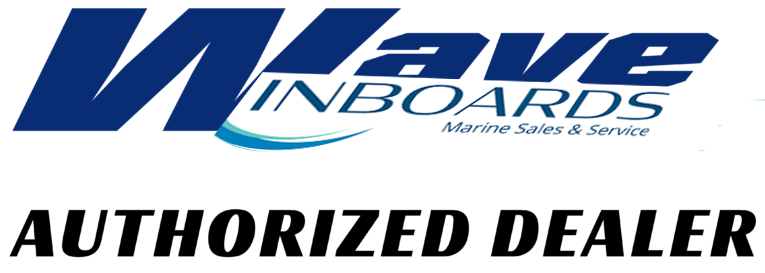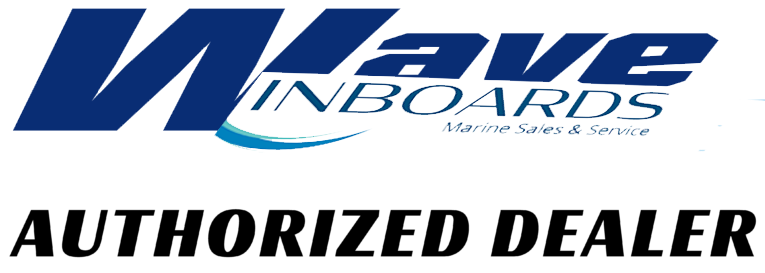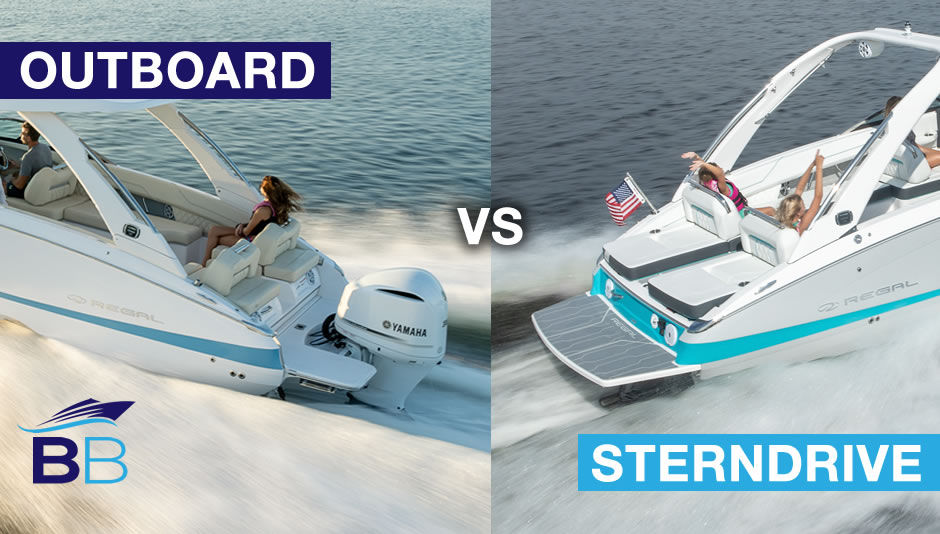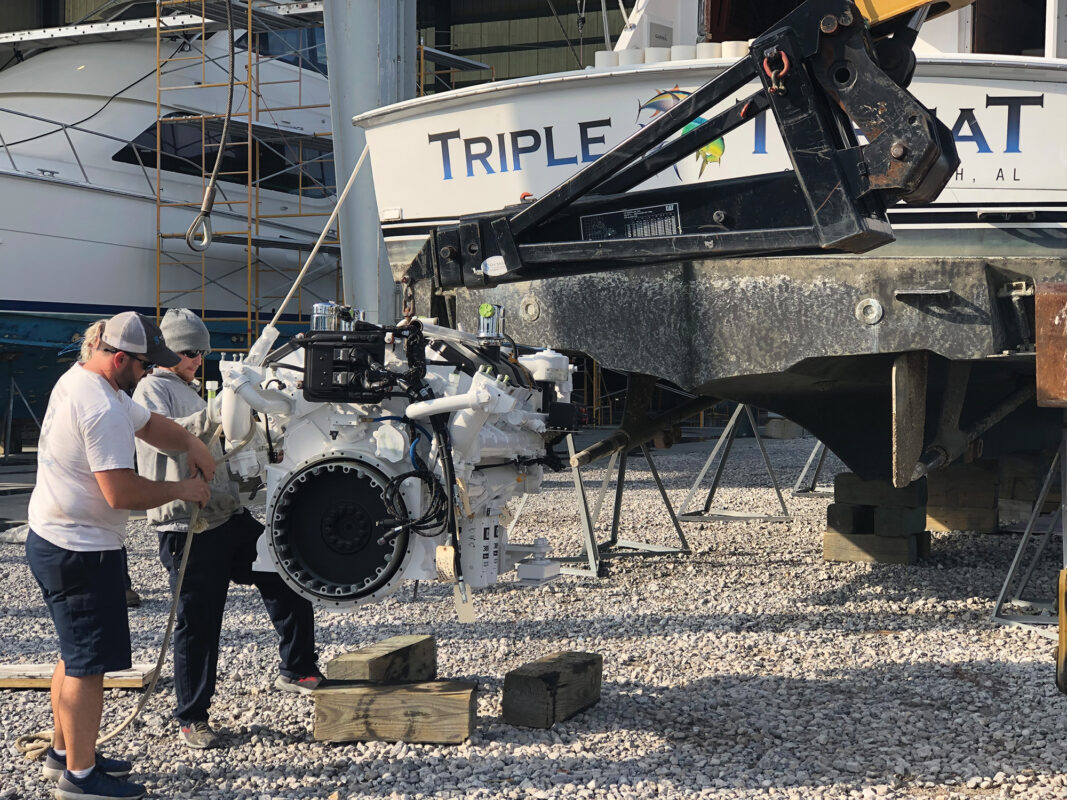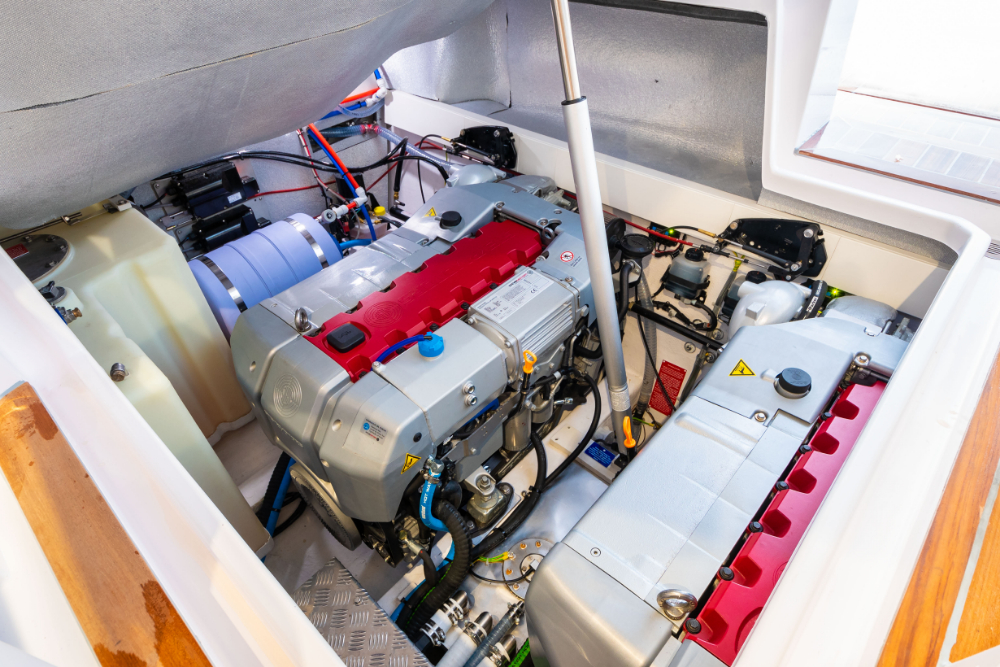Outboard to Diesel Inboard Conversion: Is It Right For You?
Weighing the Pros, Cons, and Reality of a Major Boat Transformation
The quiet hum of a diesel inboard is a dream for many owners of smaller sailboats plagued by the noise, smoke, and hassle of a transom-mounted outboard. Converting from an outboard to a diesel inboard is one of the most transformative projects a boat owner can undertake—but it’s also one of the most complex and expensive.
At Wave Inboard Motors, we’ve guided many owners through this process. This honest guide will walk you through the advantages, challenges, and hard costs to help you decide if this major conversion is the right choice for you and your vessel.
The Allure: Why Consider a Conversion?
Swapping an outboard for a diesel inboard isn’t just about changing engines; it’s about upgrading your entire boating experience.
-
Superior Reliability and Power: A diesel inboard provides steady, unwavering power to push through wind and chop. No more worries about a coughing outboard stalling in a tight maneuvering situation.
-
Dramatically Reduced Noise and Vibration: The difference is night and day. Enjoy conversation instead of shouting. Feel the boat sail instead of vibrate.
-
Much Improved Safety: The engine is safely inside the boat, away from following seas. Diesel fuel is far safer than gasoline, which produces explosive fumes.
-
Enhanced Sailing Performance: Removing heavy weight from the extreme stern (the outboard) and placing it low and amidships (the diesel) dramatically improves the boat’s balance, trim, and sailing characteristics.
-
Constant Propeller Power: A fixed, underwater propeller provides immediate thrust in astern (reverse) and eliminates the outboard’s struggle to stay submerged in waves.
The Reality: The Challenges and Costs
This is a major structural and mechanical project, not a simple engine swap.
-
High Project Cost: This is the biggest barrier. A full conversion is often more expensive than the market value of a small production boat.
-
New Engine: A compact diesel like the 【Vetus M2.13】 or 【Yanmar 2YM15】 costs $8,000 – $12,000+.
-
Labor & Installation: Complex fabrication means labor can easily reach $5,000 – $10,000+.
-
Parts & Materials: You’ll need a propeller, shaft, strut, rudder, fuel tank, exhaust system, and controls. Budget $3,000 – $6,000.
-
**Total Estimated Cost: $16,000 – $30,000+
-
-
Major Boat Surgery: The project involves:
-
Cutting a large hole in the hull for the propeller shaft.
-
Glassing in an engine bed strong enough to handle torque.
-
Installing a stern tube, strut, and rudder.
-
Fabricating new fuel and exhaust systems.
-
-
Loss of Self-Steering: Most boats with outboards use the outboard as a rudder for steering. A new inboard requires a dedicated rudder to be fitted.
-
Potential for Project Creep: Once you start, you often find other areas that need work, increasing the budget and timeline.
Is Your Boat a Good Candidate?
Not every boat is suited for this conversion. The ideal candidate:
-
Has a design that originally offered an inboard option. This means the hull is already designed with the necessary space and structure.
-
Is a keeper. You love the boat and plan to own it for the long term, as you will not recoup the full investment upon sale.
-
Is structurally sound. It’s not worth investing in a conversion on a boat with a failing hull or deck.
-
Is large enough. This project is most practical and valuable on boats in the 25′ to 30′ range.
Wave Inboard Motors’ Expert Recommendation
For most owners, we recommend this conversion only if:
-
You have a classic or high-quality boat (e.g., Alberg, Tartan, Pacific Seacraft) that deserves the investment.
-
You are a serious cruiser who will truly benefit from the reliability and safety.
-
You have the budget to do it correctly with professional help.
-
You view it as a labor of love to create your perfect boat, not as a financial investment.
For many, a high-quality, modern 4-stroke outboard (e.g., a Honda 9.9) is a far more cost-effective solution that addresses many noise and reliability issues without the immense cost and complexity.
Ready to Explore Your Options?
If you’ve weighed the pros and cons and are still interested, the first step is a professional consultation.
We offer a full 【Boat Conversion Feasibility Assessment】 where we will:
-
Examine your boat’s hull structure for space and strength.
-
Provide a realistic outline of the work required.
-
Give you a preliminary budget estimate.
Explore Compact Diesel Engine Options:
-
【Vetus M2.13】 (12HP) – The lightest, most compact option.
-
【Yanmar 2YM15】 (14.5HP) – A legendary brand with a stellar reputation.
-
【Beta Marine 14】 (14HP) – Renowned for its Kubota industrial base.
Conclusion: A Rewarding, But Serious, Undertaking
An outboard to diesel inboard conversion can create the perfect, reliable, and joyful cruiser you’ve always wanted. However, it is a significant undertaking that requires a serious commitment of time and money.
For most, it’s a passion project. For a few, it’s a practical choice. For everyone, it requires careful thought.
Contact Wave Inboard Motors today for a straightforward, honest conversation about your boat and your goals. We’ll help you understand what’s possible and what’s practical.
Continue Your Research:
